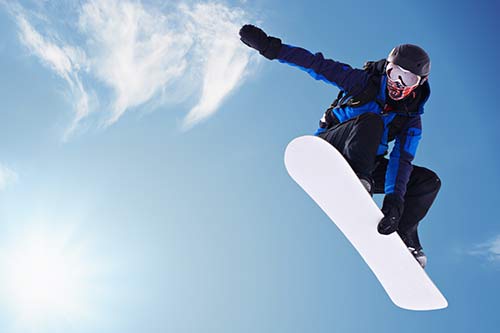•Collisions with other parties
•Snowboarding beyond your skill level
•Snowboarding while fatigued
The most common snowboarding injuries are lower extremity injuries – specifically, knee injuries. Good snowboard boots and bindings can help support your knees and offer necessary protection. A snowboarder can do knee exercises before hitting the slopes. Getting your body ready for split-second reactions and maneuvers is excellent preparation. Also, wearing suitable knee pads and equipment can help prevent knee injury.
Snowboarding Injuries: Shoulder
Another common snowboarding injury is the shoulder, specifically: dislocation, fracture, or separation. Landing incorrectly can lead to any of these situations, so learning to fall correctly is critical. Shoulder injuries can be painful, make everyday activities difficult, and interfere with your overall quality of life. Wearing shoulder protection and teaching yourself to fall properly can go a long way in preventing serious shoulder injury. Since it’s impossible to avoid falls completely, try practicing sport-specific movements that train you to fall safely.
Spinal Injuries
Snowboarding is a challenging sport with a lot of creativity and variation. For those who incorporate jumps into their routine, spinal injury is a potential risk. Jumping is the leading cause of spinal injury in snow-boarders. The second and third causes are falling and overuse. To prevent spinal injury, it’s best to engage in plenty of jump practice. When you educate yourself on proper technique and try your jumps in safe places, you’re better prepared to give them a go on the slopes.
Colorado Ski & Snowboard Accident Lawyer
If you’ve been hurt in a ski or snowboarding accident, an attorney can help determine whether you qualify for damages. Colorado snowboard accident attorneys are here to discover whether your accident was a result of someone else’s negligence. We’re familiar with snow sport in jury cases, and we’re here to assist with any questions you might have.
